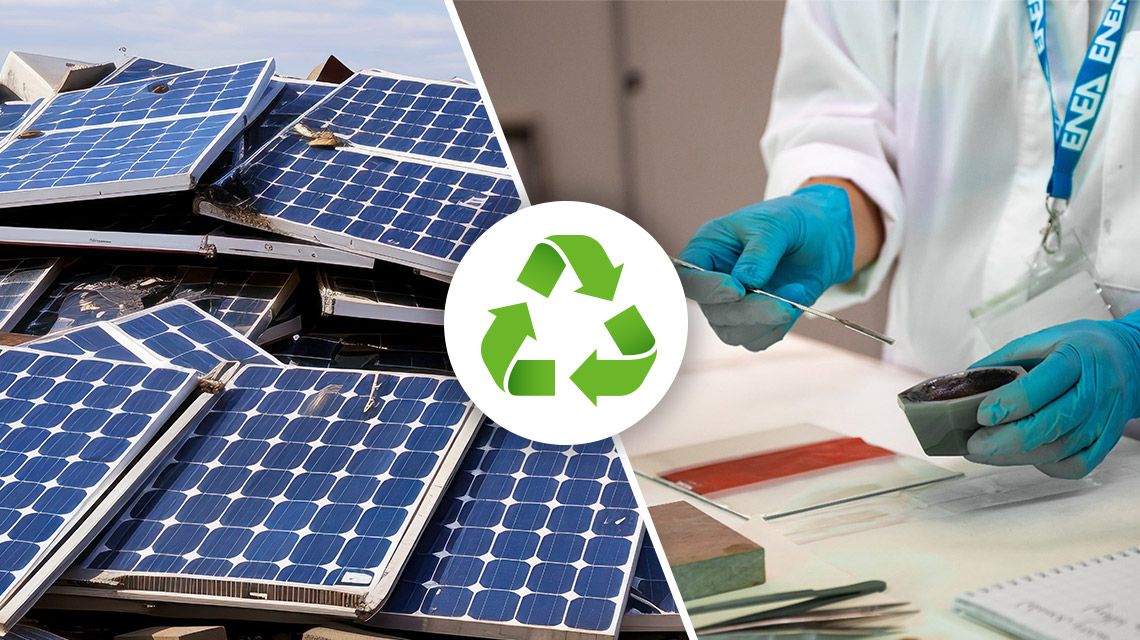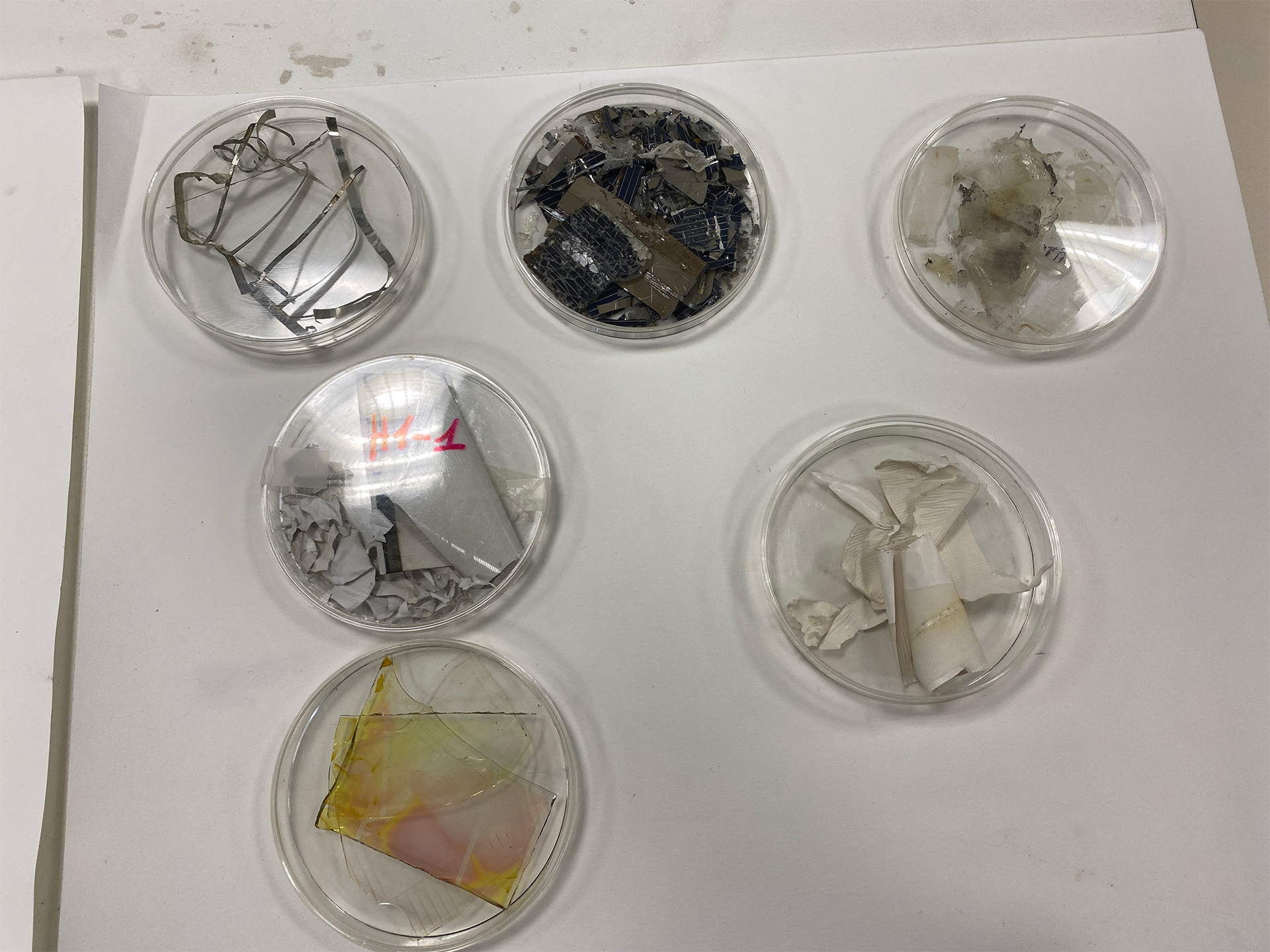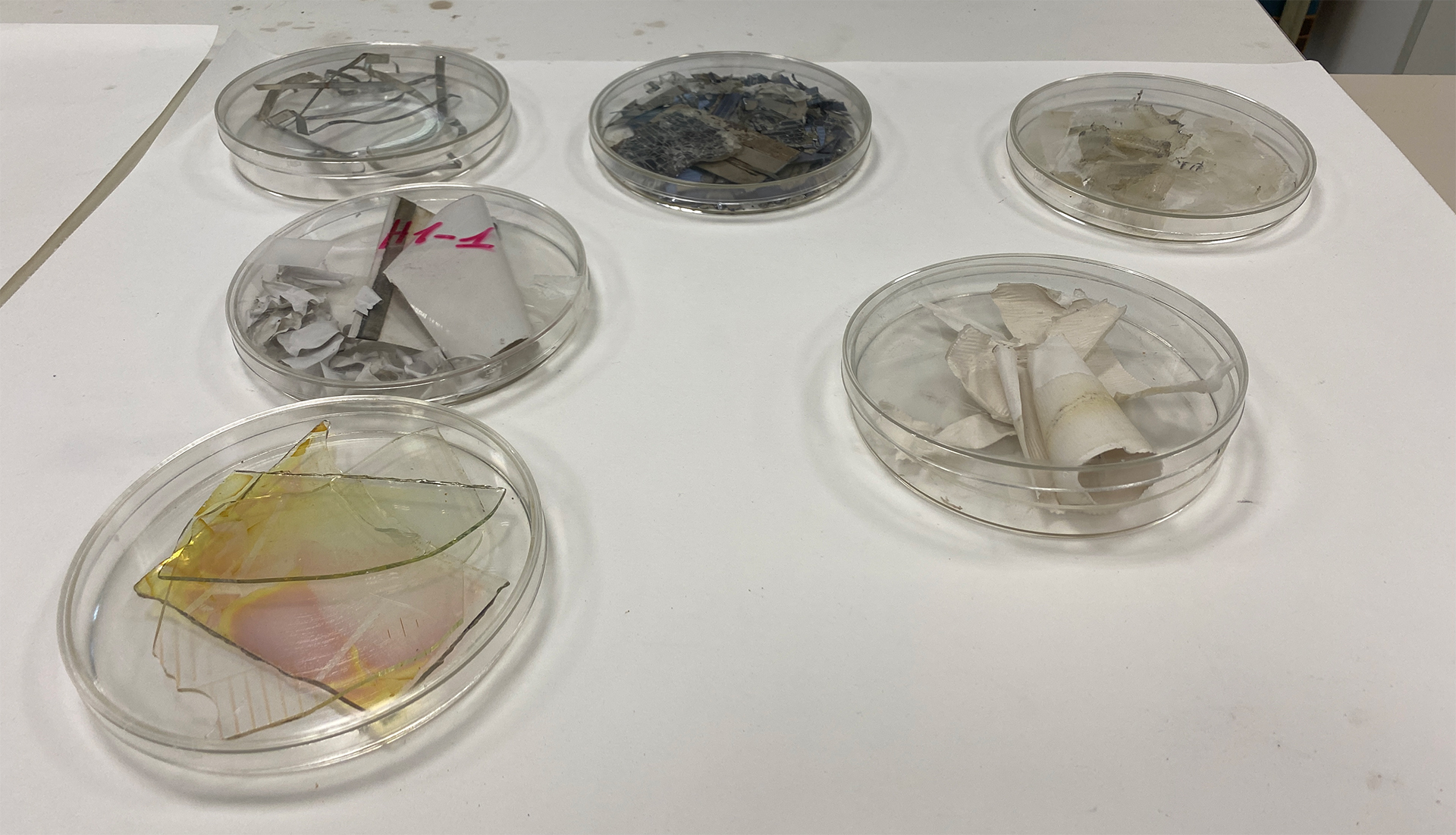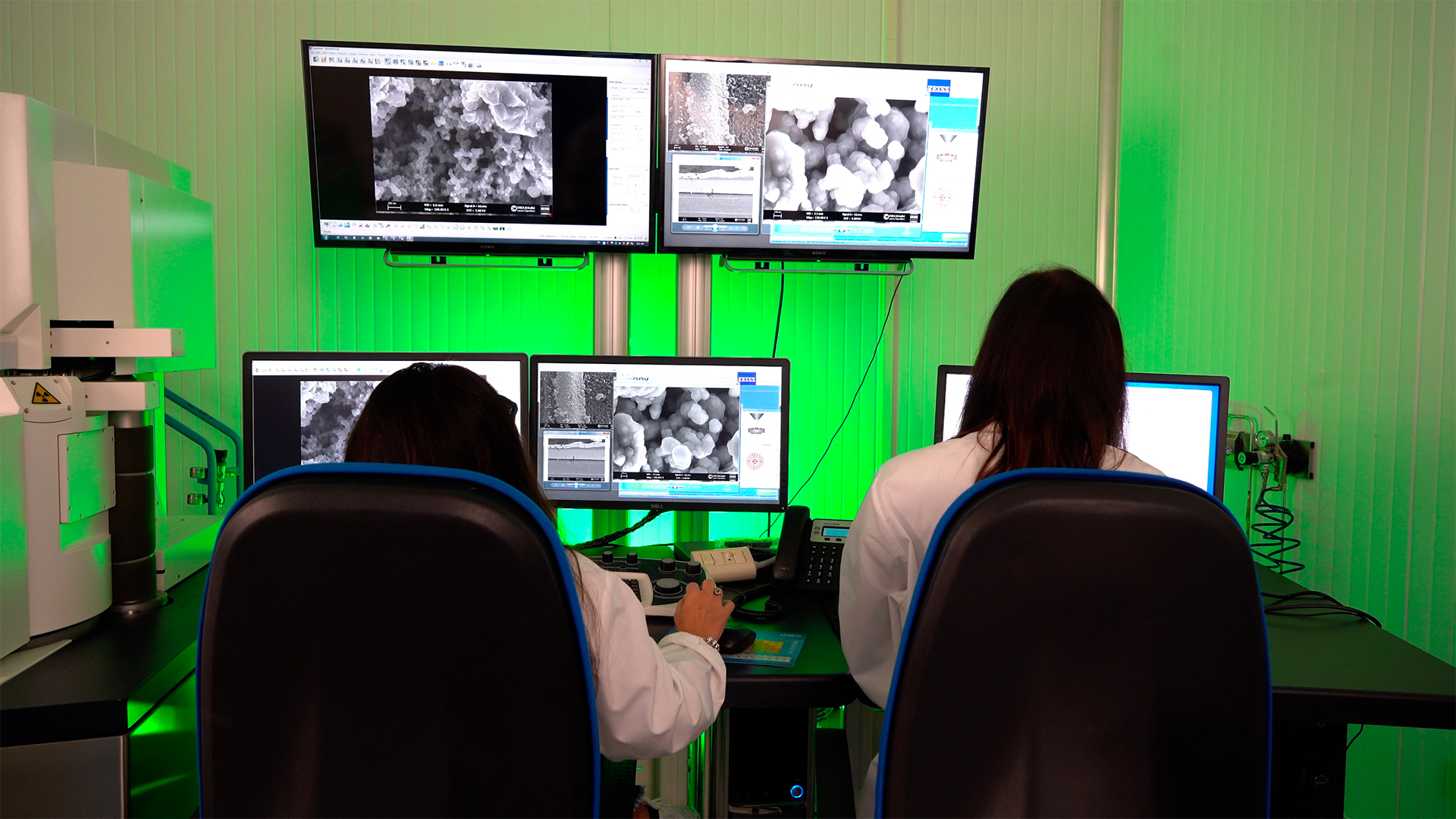Italian National Agency for New Technologies, Energy and Sustainable Economic Development

Energy: Photovoltaic, from ENEA patents and solutions for recycling end-of-life panels
Patents, solutions and innovative methods to effectively recover and valorize materials in end-of-life photovoltaic panels and reuse them in industr, are some of the results ENEA achieved in the materials recovery sector, including critical ones, from decommissioned photovoltaic panels, for a sustainable supply of high added value raw materials for industry, in line with technological innovation and the circular economy.
ENEA researchers from the Sustainability Department are working on various fronts with the aim of recovering critical materials (like silicon and aluminum), strategic materials (copper) and non-critical materials (glass, silver and polymeric components). The innovative technologies were presented at the workshop “Recovery & recycling from PV panels” organized by ENEA as part of the VII edition of the Symposium on Circular Economy and Urban Mining (SUM 2024).
At the center of the event were the outcomes of the ReSiELP project, funded by the KIC EIT RawMaterials, which include a plant for the thermal treatment of panels, systems for the treatment of liquid and gaseous wastewater resulting from the thermal treatment, but also the evaluation of the environmental and economic performance of the entire recycling process, thanks to Life Cycle Analysis (LCA) and Life Cycle Cost (LCC) methods.
In addition, as part of the project IEMAP funded by the MASE (2022-2024) as part of the “Mission Innovation” initiative, ENEA is developing an innovative patented process[1], for the recovery of the main components of photovoltaic panels like glass, cells, electrical contacts, plastic components, based on an infrared treatment that allows the thermal degradation of the plastic layer[2] and avoids combustion, typical of other methods, resulting in reduced emissions into the atmosphere.
ENEA has also patented a low environmental impact process to recover silicon from end-of-life photovoltaic panels and transform it into an innovative nanomaterial, useful to develop less expensive, higher-performance and longer-lasting batteries. The patent can be used in PV panel recycling plants and in PV panel manufacturing plants, for instance to recover silicon from defective panels.[3]
The PARSIVAL project, funded by KIC EIT Raw Materials, which follows the same line of research, aims at developing technological solutions for the treatment of recovered silicon cells to produce anodes for lithium-ion batteries with higher energy density than commercial ones.
The recovery of silicon and other components which make up the photovoltaic module are conducted in collaboration with the ENEA Energy Technologies and Renewable Sources Department, where new generation cells, modules and batteries are studied, designed and manufactured, a virtuous example of a closed value chain and life cycle.
“The global rise in PV waste generation imposes greater attention be paid to the management of end-of-life panels,” said Marco Tammaro, head of the ENEA Laboratory of Technologies for Reuse, Recycling, Recovery and Valorization of Waste and Materials. “In this context, research and innovation can play a key role in reducing problems related to the scarcity of resources and reducing imports from abroad, at lower costs than primary raw materials.”
“The development of high-quality recycling solutions in end-of-life management will allow a virtuous closed cycle of these devices,” said Maria Lucia Protopapa, at the ENEA Laboratory of Functional Materials and Technologies for Sustainable Applications, Brindisi Research Center. “Recovered materials and components can thus be reintroduced into a new production cycle, with benefits in terms of energy, economic and environmental savings.”
It has been estimated that the photovoltaic power installed globally has undergone an exponential increase reaching 1,047 GW[4] at the end of 2022 with a rising trend expected to reach 18,200 GW by 2050, when the panels to be disposed may reach 78 million tons.



